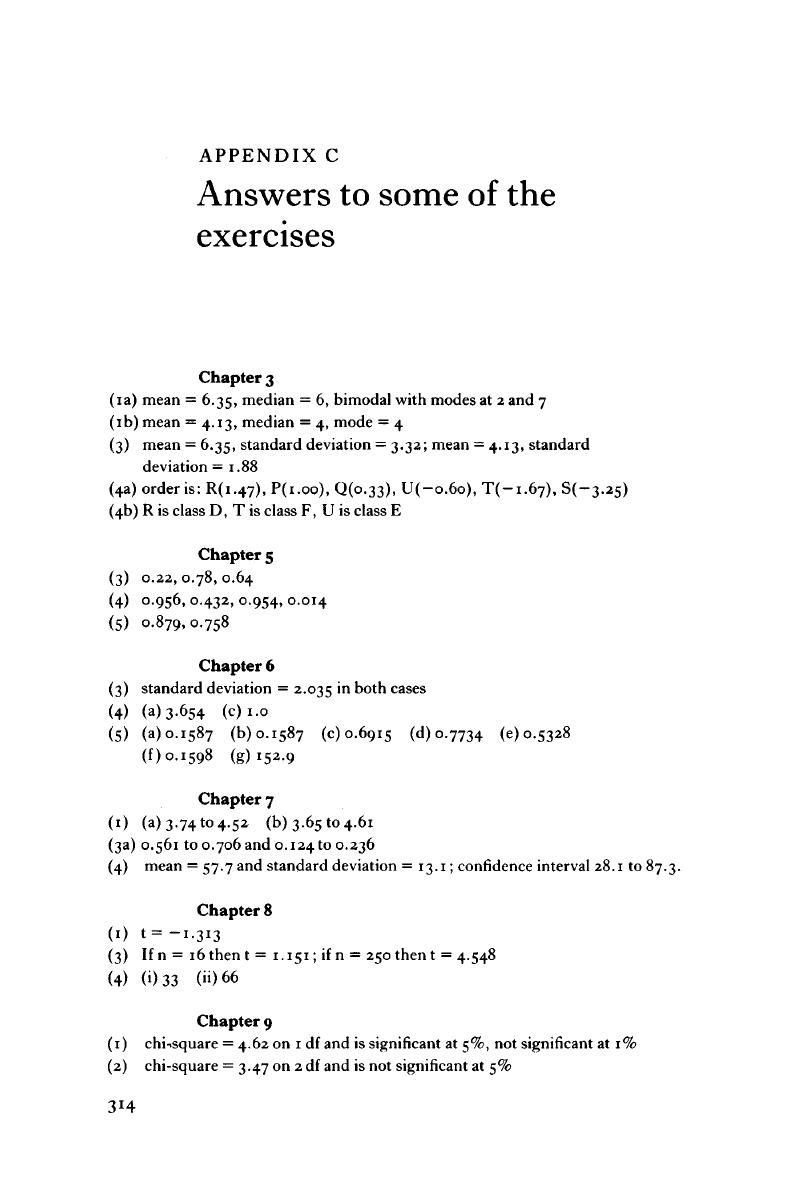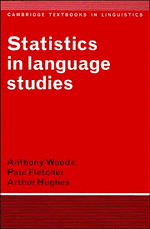Book contents
- Frontmatter
- Contents
- Preface
- 1 Why do linguists need statistics?
- 2 Tables and graphs
- 3 Summary measures
- 4 Statistical inference
- 5 Probability
- 6 Modelling statistical populations
- 7 Estimating from samples
- 8 Testing hypotheses about population values
- 9 Testing the fit of models to data
- 10 Measuring the degree of interdependence between two variables
- 11 Testing for differences between two populations
- 12 Analysis of variance – ANOVA
- 13 Linear regression
- 14 Searching for groups and clusters
- 15 Principal components analysis and factor analysis
- Appendix A Statistical tables
- Appendix B Statistical computation
- Appendix C Answers to some of the exercises
- References
- Index
Appendix C - Answers to some of the exercises
Published online by Cambridge University Press: 05 June 2012
- Frontmatter
- Contents
- Preface
- 1 Why do linguists need statistics?
- 2 Tables and graphs
- 3 Summary measures
- 4 Statistical inference
- 5 Probability
- 6 Modelling statistical populations
- 7 Estimating from samples
- 8 Testing hypotheses about population values
- 9 Testing the fit of models to data
- 10 Measuring the degree of interdependence between two variables
- 11 Testing for differences between two populations
- 12 Analysis of variance – ANOVA
- 13 Linear regression
- 14 Searching for groups and clusters
- 15 Principal components analysis and factor analysis
- Appendix A Statistical tables
- Appendix B Statistical computation
- Appendix C Answers to some of the exercises
- References
- Index
Summary

Information
- Type
- Chapter
- Information
- Statistics in Language Studies , pp. 314 - 315Publisher: Cambridge University PressPrint publication year: 1986
